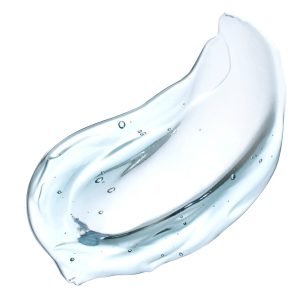Bonjela Junior gel for mouth ulcers
This leaflet is for parents and carers about how to use this medicine in children. Our information may differ from that provided by the manufacturers, because their information usually relates to adults. Read this leaflet carefully. Keep it somewhere safe so that you can read it again.
Name of medicine
Bonjela Junior Gel
Contains lidocaine hydrochloride and cetylpyridinium chloride.
The gel contains a tiny amount of alcohol.
Adult preparations of Bonjela (Bonjela Adult, Cool Mint Gel, Bonjela Plus) contain a different ingredient from Bonjela Junior gel and should not be used for mouth ulcers in children under 16 years of age.
Why is it important for my child to take Bonjela Junior gel?
Bonjela Junior gel contains two ingredients that are useful when treating mouth ulcers.
- Lidocaine is local anaesthetic. It numbs the sore area, reducing pain and irritation.
- Cetylpyridinium chloride is an antiseptic, meaning that it kills germs. This helps to prevent the ulcer from becoming infected.
When should I give Bonjela Junior gel
Apply the gel to the sore area when the pain starts. You can apply it again 20 minutes later. You can then apply it every 3 hours. Stop applying it if the pain has stopped.
Make a note of the times you apply the gel so that you know when to apply it again.
How much should I give?
Check the instructions on the packet. Apply enough gel to cover the painful area in the mouth with a thin layer.
How should I give Bonjela Junior gel?

Gel
- Wash your hands thoroughly with soap and hot water before and after applying the gel.
- Squeeze out a small amount of gel onto your fore finger. Spread the gel in a thin layer over the affected area of the mouth. Do not rub it in.
- Do not apply the gel to areas that are not sore.
When should the medicine start working?
The local anaesthetic will start to work straight away, although it may take a while for your child to settle as the pain improves.
What if my child is sick (vomits)?
If your child is sick less than 30 minutes after having a dose of Bonjela Junior gel, give them the same dose again.
If your child is sick more than 30 minutes after having a dose of Bonjela Junior gel, you do not need to give them another dose. Wait until the next normal dose.
What if I forget to give it?
If your child still needs the gel for pain relief, apply the gel as soon as you remember.
What if I give too much?
Bonjela Junior gel is unlikely to cause harm if you apply an extra amount by mistake.
Are there any possible side effects?
Bonjela Junior Gel is unlikely to cause any side-effects.
Can other medicines be given at the same time as Bonjela Junior gel?
- You can give your child medicines that contain ibuprofen or paracetamol, unless your doctor has told you not to.
- If your child is on any other medicines, check with your pharmacist before using Bonjela Junior gel.
Is there anything else I need to know about this medicine?
- This gel is not suitable for babies and young children who have pain from teething. Your pharmacist will be able to recommend an appropriate medicine for this.
- Lidocaine is also used on the skin or as by injection as a local anaesthetic. The amount of lidocaine is much lower in Bonjela Junior gel.
- If your child has heart or liver problems, check with your doctor or pharmacist before using Bonjela Junior gel.
Who to contact for more information?
Your pharmacist or dentist will be able to give you more information about Bonjela Junior gel and other treatments for mouth ulcers. You can also get information from:
England: NHS 111
Tel 111
www.nhs.ukScotland: NHS 24
Tel 111
www.nhs24.scotNorthern Ireland: NI Direct
Wales: NHS 111 Wales
Tel 111
www.111.wales.nhs.ukCopyright disclaimer
Version [1]. © NPPG, RCPCH and WellChild, all rights reserved. Review by March 2024.
The primary source for the information in this leaflet is the British National Formulary for Children. For details on any other sources used for this leaflet, please contact us through our website, www.medicinesforchildren.org.uk.
We take great care to make sure that the information in this leaflet is correct and up-to-date. However, medicines can be used in different ways for different patients. It is important that you ask the advice of your doctor or pharmacist if you are not sure about something. This leaflet is about the use of these medicines in the UK, and may not apply to other countries. The Royal College of Paediatrics and Child Health (RCPCH), the Neonatal and Paediatric Pharmacists Group (NPPG), WellChild and the contributors and editors cannot be held responsible for the accuracy of information, omissions of information, or any actions that may be taken as a consequence of reading this leaflet.
